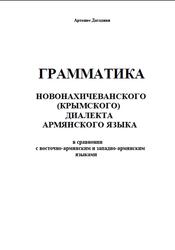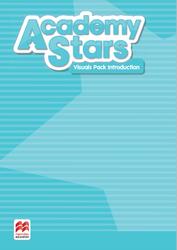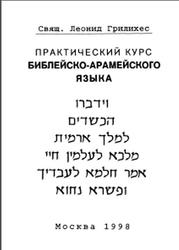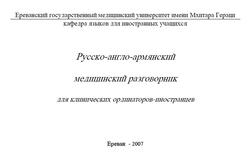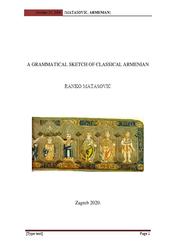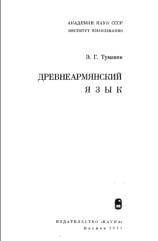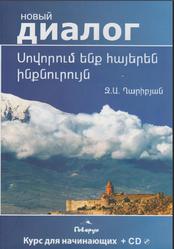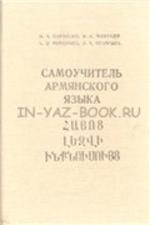Iranian Armenian is the variety of spoken Armenian that was developed by Armenians in Tehran, Iran over the last few centuries. It has a substantial community of speakers in California. This variety or lect is called ‘Persian Armenian’ [pɒɻskɒhɒjeɻen] or ‘Iranian Armenian’ [iɻɒnɒhɒjeɻen] by members of the community. The present book is not a comprehensive grammar of the language. It occupies a gray zone between being a simple sketch versus a sizable grammar. We attempt to clarify the basic aspects of the language, such as its phoneme inventory, noticeable morphophonological processes, various inflectional paradigms, and some peculiar aspects of its syntax. We likewise provide a sample text of Iranian Armenian speech.

Suppletive verbs.
A small class of irregular verbs are suppletive. These inflect as E-Class verbs in many parts of the paradigm. But in other parts, they use a different root allomorph and irregular imperative suffixes. Suppletive verbs can be categorized into three groups or subclasses, which we catalog below.
The first group of verbs is listed in Table 6.58. For a suppletive verb like ‘to eat’ ut-e-l, the root maintains a constant form ut- in many paradigm cells. In some other cells, the root uses a morphologically-conditioned allomorph keɻ-. We call keɻ- the restricted allomorph, while ut- is the elsewhere allomorph. In the traditional literature, the restricted morph is also called the aorist stem.
ОГЛАВЛЕНИЕ.
Acknowledgments.
Abbreviation.
1 Introduction.
1.1 Overview of Iranian Armenian.
1.2 Migration history and dialect classification.
1.3 Sociolinguistics of the Iranian Armenian community.
1.3.1 Characteristics of the three codes.
1.3.2 Social stigmatization of the spoken vernacular.
1.4 Fieldwork and language consultants.
1.5 Orthography, transcription, and glossing.
2 Phonology.
2.1 Segmental phonology.
2.1.1 Laryngeal qualities of consonants.
2.1.2 Rhotics.
2.1.3 Other consonants.
2.1.4 Vowel inventory.
2.2 Suprasegmental phonology.
2.2.1 Syllable structure.
2.2.2 Lexical stress.
2.2.3 Prosodic phonology and intonation.
3 Morphophonology.
3.1 Morphophonological alternations.
3.1.1 Root-initial glide insertion.
3.1.2 Vowel hiatus repair.
3.1.3 Destressed high vowel reduction.
3.2 Phonologically-conditioned allomorphy.
3.2.1 Syllable-counting allomorphy of the plural suffix.
3.2.2 Schwa alternations in the determiner slot.
3.2.3 Voicing assimilation in the synthetic future prefix.
3.3 Phonosyntax: Auxiliary-induced segment deletion.
3.3.1 Background on the mobile auxiliary.
3.3.2 Non-constant form of the perfective converb.
3.3.3 Long-distance conditions.
3.3.4 Irregular imperfective converb.
3.3.5 Diachronic origins and effects of adjacency.
4 Nominal morphology.
4.1 Basic template for nominal inflection.
4.2 Constraints on definite marking and case marking.
4.3 Constraints on possessive marking.
4.4 Synthetic constructions for plural possessors.
4.5 Differential object marking.
4.6 Indefinites and classifiers.
5 Function words.
5.1 Personal pronouns.
5.2 Demonstratives.
5.3 Interrogative pronouns.
5.4 Numerals.
5.4.1 Cardinal numerals.
5.4.2 Ordinal numerals.
5.5 Other function words.
6 Verbal morphology.
6.1 Simple verbs and their classes.
6.2 Auxiliaries.
6.2.1 Present auxiliary.
6.2.2 Past auxiliary.
6.2.3 Negation.
6.3 Periphrastic structures.
6.3.1 Indicative present and past imperfective.
6.3.2 Present perfect and pluperfect.
6.3.3 Simultaneous converb.
6.4 Synthetic forms.
6.4.1 Past perfective or aorist form.
6.4.2 Subjunctive.
6.4.3 Imperatives and prohibitives.
6.4.4 Participles.
6.5 Future: Synthetic and periphrastic constructions.
6.5.1 Variation in future marking.
6.5.2 Periphrastic future with a converb.
6.5.3 Synthetic future with a prefix.
6.6 Complex regular verb class.
6.6.1 Passives.
6.6.2 Inchoatives.
6.6.3 Causatives.
6.7 Irregular verbs.
6.7.1 Infixed verbs.
6.7.2 Suppletive verbs.
6.7.3 Defective verbs.
6.7.4 Other irregular verbs.
7 Syntax.
7.1 Object clitic for second person.
7.1.1 General use of the object clitic.
7.1.2 Object clitic for direct objects in the synthetic future.
7.1.3 Object clitic for other tenses and moods.
7.1.4 Cliticizing other verbal arguments.
7.2 Resumptive pronouns in relative clauses.
7.3 Subjunctive marking in complement clauses.
7.4 Agreement-marking in nominalized relative clauses or participial clauses.
8 Text.
References.
Index.
Name index.
Бесплатно скачать электронную книгу в удобном формате, смотреть и читать:
Скачать книгу A grammar of Iranian Armenian, Parskahayeren or Iranahayeren, Dolatian H., Sharifzadeh A., Vaux B., 2023 - fileskachat.com, быстрое и бесплатное скачивание.
Скачать pdf
Ниже можно купить эту книгу, если она есть в продаже, и похожие книги по лучшей цене со скидкой с доставкой по всей России.Купить книги
Скачать - pdf - Яндекс.Диск.
Дата публикации:
Теги: учебник по арамейскому языку :: арамейский язык :: Dolatian :: Sharifzadeh :: Vaux
Смотрите также учебники, книги и учебные материалы:
Следующие учебники и книги:
Предыдущие статьи:

